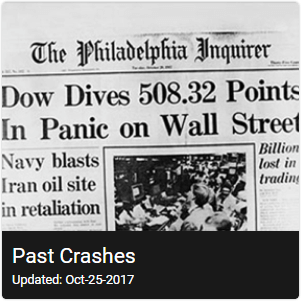This scenario covers the heart of the global financial crisis, from the collapse of Lehman Brothers until the market lows of early 2009, and examines the max draw downs of key levers over that timeframe.
- This outcome uses the max drawdown of all levers for the overall crisis.
- The 2008 financial crisis led the world into a global recession
- Though the crisis officially ended in mid-2009, the crippling after effects are still being felt today
This scenario covers the timeframe from September 1, 2008 through March 9th, 2009, and measures the historical change of each lever over those dates.
- This scenario outcome reflects the economic movements between Sept. 1, 2008 and March 9th, 2009.
- For monthly and other less granular levers, the nearest time period is used
This scenario covers the timeframe from October to early November of 1987, which includes the Black Monday crash.On October 19, 1987 markets unexpectedly fell in a very short period of time (-22.61% for the DJIA). No clear answer has been found to explain why and how this crash happened. Amongst the factors that have been identified as potential causes of the crash are computer trading failures, market psychology and lack of liquidity.
This scenario covers the Dot-Com bubble crash, which begins at the peak of the Nasdaq in March 2000 and continues for an entire year, as the Nasdaq tumbled.
- The Dot-Com bubble burst in March 2000 when the Fed increased interest rates six times
- Only 50% of the dot-coms survived through 2004
- A recession ensued, which was magnified by 9/11

Leave a Reply